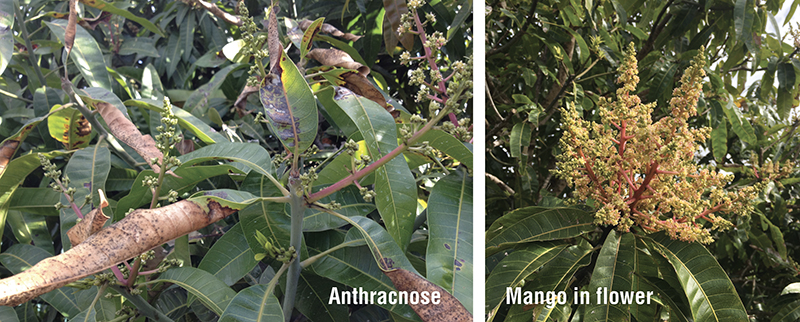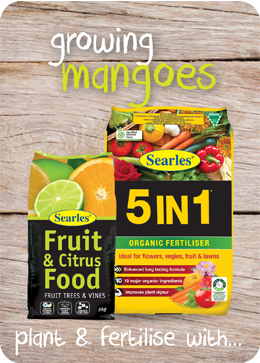How to Grow Mangoes
 |
At the height of Summer, the sweet smell of a freshly picked mango will give any gardener the tingle of Summer vibes. Mango trees are easy to grow and bear fruit quite easily. All they need is a sunny space to grow, some warm weather nutrition and you will have fleshy summer fruit in your hands.
Planting mango treesMango trees need a sunny position with room for future growth. Mango trees can typically grow up to 7 metres in height and width, so allow approximately a 3 to 5 metre radius from the base of the tree to grow naturally and support optimum air circulation through the branches and ease of picking the fruits. Regular pruning after fruiting can control the height and width of your tree allowing you to harvest fruits easier and promote new healthy growth for the next season. Mango trees will grow best in tropical, subtropical and warm temperate climates with hot summers and frost-free Winters. Mango trees can be planted in Spring and Autumn. They require regular access to rich composted manures, fertilisers and minerals to flower well in Spring and produce large fruits during summer. Before planting, enrich the soil with 5 IN 1 Organic Fertiliser which contains plenty of nutrients to establish strong root growth and sustain their heavy feeding.
Best mango varietiesThe most popular and easy to grow mangoes for warm climates are "Kensington Pride' and the much smaller variety 'Palmer'. They are other varieties but check with your local gardening outlet for the best option for your garden requirements.
Fertilising mango treesIdeally, feed mango trees early Spring when they are flowering and again early Summer and late Summer as the young fruits start to develop and ripen. Sprinkle Searles Fruit & Citrus Food in a broad band below the tree's dripline extending beyond the canopy where the roots feed. Water well after application.
Watering & mulching mango treesMango trees require regular watering during their flowering and fruiting season in Spring and especially Summer. Deep watering is preferred and mulching over the roots will help reduce moisture loss.
Harvesting mango treesDepending on the variety of the mango planted, harvest when the colour of the flesh turns from green to yellow or red. Protection from our feathered friends, birds and bats, is required close to ripening. Wrap ripening fruit with fine fruit netting bags or cover the whole tree with a bird friendly vegetable netting.
Pests & Diseases of mango treesFruit fly and a fungal disease called Anthracnose are the main problems affecting mango fruit and leaves. Keep an eye out for the fungal disease which can come on very quickly and during long periods of wet weather. The fungus appears as irregular shaped black spots and can spread very quickly and attack flower panicles, fruit and young developing leaves, preventing fruit development. Treat disease with alternative sprays of Mancozeb and Copper Oxychloride. To prevent Fruit fly stinging and spoiling your fruit, hang Searles Fruit Fly traps on the tree to detect, trap and kill the male fruit fly to stop it from breeding.
Pruning mango treesEvery year after fruiting has finished in Autumn, lightly prune dead and unwanted branches. To keep the tree at the desired height for collecting fruit, lightly prune every year.
|
--------------------------------- |






